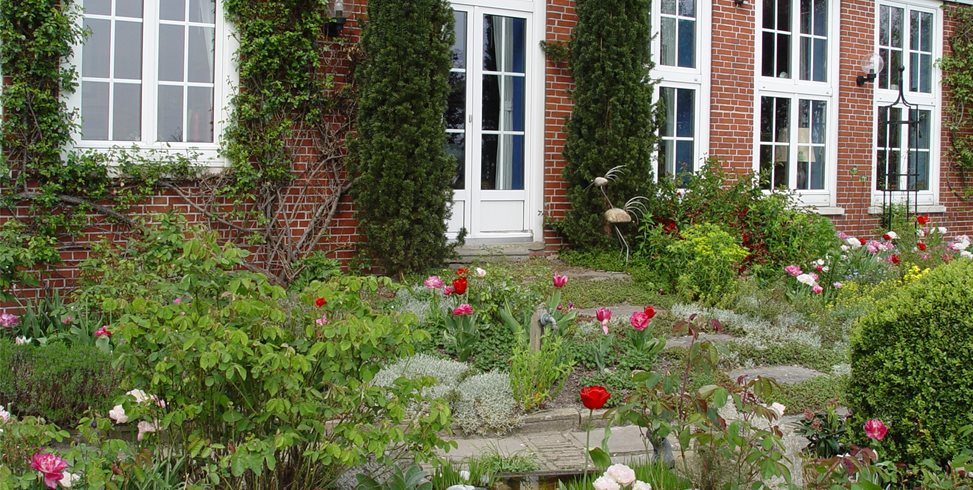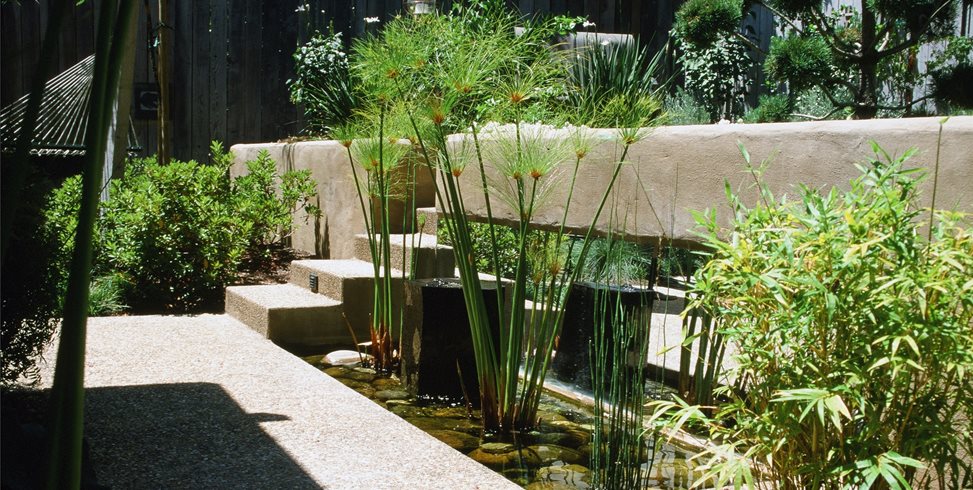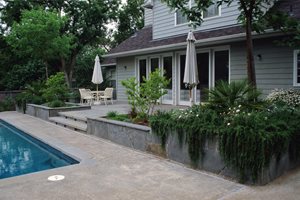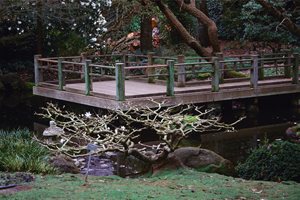Grade Change Design Tips
How to accommodate challenges in linking one elevation in a landscape to anotherUnless you live on a perfectly flat lot with your house on a slab foundation, you will have changes in grade. These may be as simple as a curb along the driveway edge or a retaining wall to hold the slope in your backyard. Whether composed of earth or an engineered retaining structure, the design must integrate every one of these grade changes whether it requires just one step or ten. Rarely can finish grades be changed, so the challenge is linking one elevation to another in an attractive, functional manner.
Edges also give lots of opportunities for creative step treatments. The width of the tread stipulates whether you take up grade in the most efficient way, or you stretch it out for a more graceful rise. Don't look at steps as just a functional part of the garden, turn each group of them into an opportunity for creative materials, walls and planting.
Definitions
Cheekwalls: Cheekwalls are used to stabilize the ground at the edges of a set of steps. Cheekwalls solve many problems from uncontrolled runoff to pedestrian safety. If built wide enough at the top they become an excellent surface for large decorative containers.

 Backyards
Backyards
 Front Yards
Front Yards









